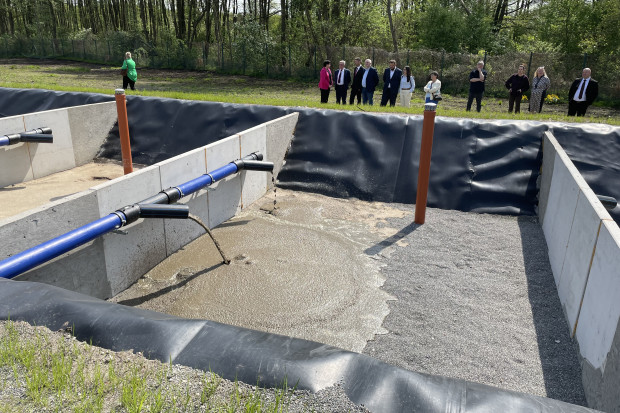No more problems with septic tanks. The basis of this solution are filters dug into the ground

- In the Wyśmierzyce region, a significant part of the wastewater is sewage delivered by sewage disposal vehicles, with a very high concentration of pollutants.
- Due to the limitations and high costs of traditional sewage treatment plants, a decision was made to use a so-called natural sewage treatment plant.
- Unlike traditional solutions, wetland treatment plants are able to accept large and unexpected amounts of incoming sewage. However, their construction requires a relatively large area.
Natural sewage treatment plants - also known as passive or wetland treatment plants - are popular in many European countries. Over 1,500 such solutions can be found in France, Germany, Italy, Denmark, the Czech Republic and Great Britain. Wyśmierzyce is one of several towns in our country that have used this technology.
- The launch of the modernized constructed wetland treatment plant is a response to the challenges faced by our commune. In the Wyśmierzyce region, a significant part of the wastewater is sewage delivered by sewage trucks, with a very high concentration of pollutants. Due to the limitations and high costs of traditional treatment plants, we decided on a modern, economical and environmentally friendly solution in the form of a natural treatment plant. Its capacity reaches 90 cubic meters of sewage per day , while ensuring protection of the natural environment of the Pilica River Valley - says Małgorzata Zajączkowska, the mayor of Wyśmierzyce.
Natural sewage treatment plants as an alternative to traditional installations in rural areasNatural sewage treatment plants are recommended in municipalities in rural areas and in small towns with up to two thousand inhabitants , where part of the sewage is collected from domestic cesspools (septic tanks).
Wetland treatment plants also cope with changing population numbers and, consequently, sewage, as is often the case in seasonal tourist resorts. Such installations are also built at facilities located far from the existing sewage network, such as hotels, camping sites or stud farms. Easy expansion means that they are used by municipalities that plan to connect more towns to the sewage network.
Natural sewage treatment plants are a simple solution to use and do not require specialized personnel to operate them. : such as low electricity consumption, no need to use chemicals or fewer devices requiring service
- says Łukasz Rodek from RDLS, a spin-off company of the University of Warsaw, which implemented the project in Wyśmierzyce.
He adds that supplementing such a treatment plant with a photovoltaic installation would allow for reducing operating costs to a minimum.
How do wetland treatment plants work?Rodek explains that thanks to the use of biofilm, i.e. microorganisms responsible for the purification process, and planting, wetland treatment plants resemble wetlands overgrown with natural vegetation. They can even be built in protected areas of "Natura 2000".
The basis of the operation of natural sewage treatment plants are filters - basins dug in the ground with an area of several hundred square meters, lined with foil ensuring the tightness of the installation. The filters are filled with aggregate, on which a biofilm develops. The microorganisms that create it use the sewage as a source of carbon, and thus purify it.

- It is true that natural sewage treatment plants require a fairly large area: about one hectare per two thousand inhabitants. However, thanks to this, installations of this type - unlike traditional solutions - are able to accept large and unexpected amounts of delivered sewage. They are also not affected by the problem of sewage overflowing from overflowing tanks. The implementation in Wyśmierzyce shows that Polish municipalities are increasingly reaching for such solutions to deal with the issue of sewage treatment from cesspools - adds Łukasz Rodek.
portalsamorzadowy





